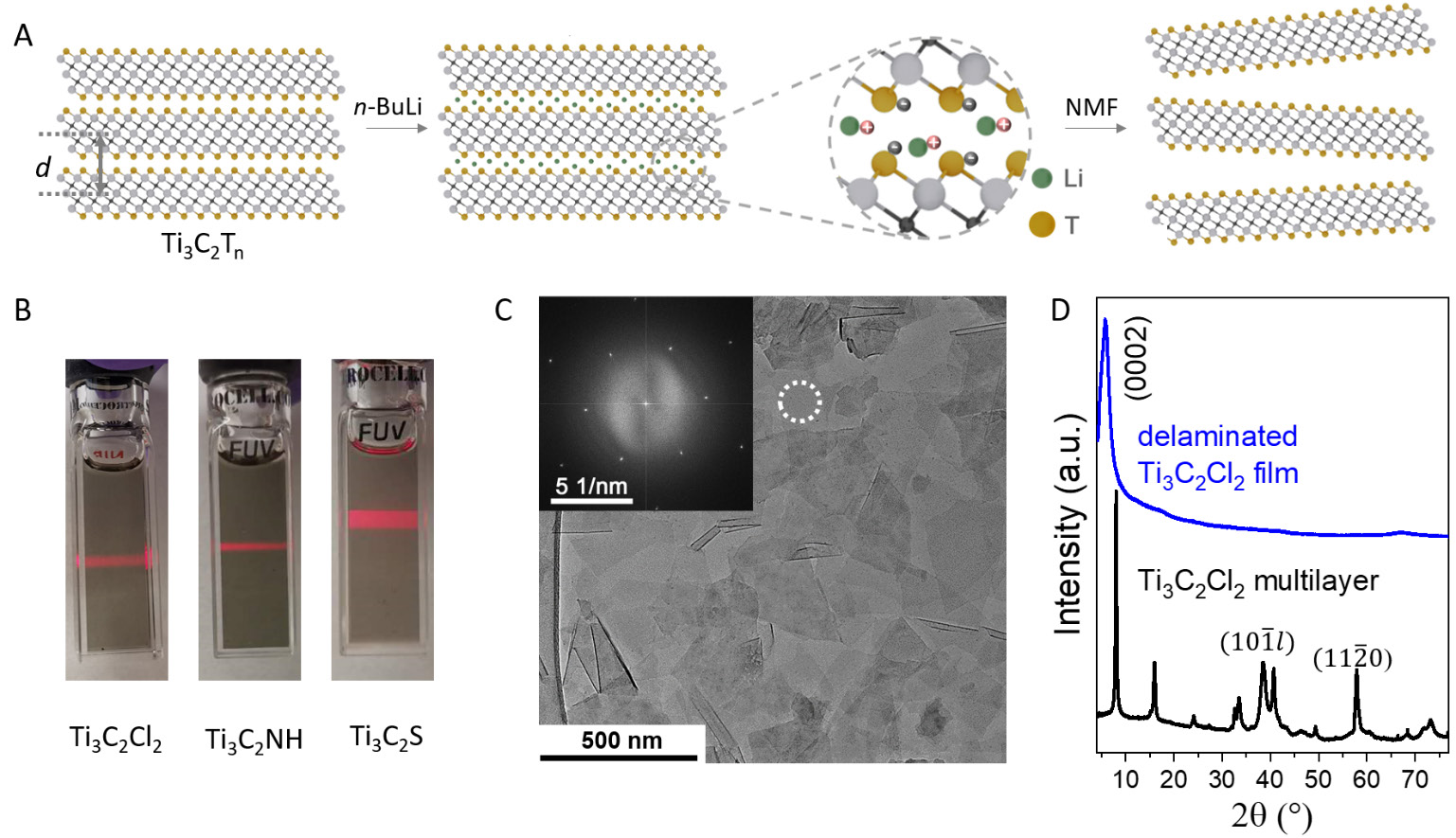
hotline:
17715390137
Tel/Wechat:
18101240246 (Technology)
0512-68565571
Email:mxenes@163.com (Sales Engineer)bkxc.bonnie@gmail.com
Scan the code to follow or search the official account on WeChat:
2D Materials Fronrier After paying attention,
click on the lower right corner to contact us,
Enter enterprise WeChat.
Professional Services Online

During the school season, the discounts dont stop! 10% off North Konami MXene and other products!


The diverse chemical transformations of surface functional groups in two-dimensional transition metal carbides (MXenes) have opened up a new design space for this broad class of functional materials. We introduce a general strategy to install and remove surface group salts through substitution and elimination reactions in molten inorganics. The successful synthesis of MXenes with O, NH, S, Cl, Se, Br, and Te surface terminations as well as bare MXenes demonstrates MXenes (without surface termination). These MXenes display unique structural and electronic properties. For example, surface groups control the interatomic distances in the MXene lattice, and Tin+1Cn (n = 1, 2) MXenes capped with Te2− ligands show huge (>18%) in-plane lattice expansion with bulk compared to the TiC lattice. Nb2C MXenes exhibit surface group-dependent superconductivity.

Figure 1. Surface reaction of MXenes in molten inorganic salts. (A) Schematic diagram of etching the MAX phase in Lewis acid molten salts. (B) Atomic resolution high angle annular dark field (HAADF) image of Ti3C2Br2 MXene sheets synthesized by etching Ti3AlC2 MAX phase in CdBr2 molten salt. The electron beam is parallel to the 2 1 10 zone axis. (C) Energy dispersive X-ray (EDX) elemental analysis (line scan) of the Ti3C2Br2 MXene sheet. (D) HAADF images of Ti3C2Te and (E) Ti3C2S MXenes, obtained by replacing the Te and S surface groups with Br, respectively. (F) HAADF image of Ti3C2□2 MXene (□ stands for vacancy), with Br surface groups obtained by reaction elimination. All scale bars are 1 nm.

Figure 2. Layering of multilayer Ti3C2Tn MXenes. (A) Schematic diagram of the layering process. (B) Ti3C2Tn MXenes (T = Cl, S, NH) in NMF presenting a stable colloidal solution photo effect of Tyndall. (C) TEM image of Ti3C2Cl2 MXene flakes deposited from colloidal solution. (Inset) Fast Fourier transform of highlighted regions showing crystallinity and hexagonal symmetry of individual flakes.
(D) XRD patterns of multilayer MXenes and layered flakes in spin-cast films on glass substrates.

Figure 3. Surface groups can induce enormous strain in the MXene lattice. (A) Distance distribution function, G(r), probed by small r regions of atomic pairs in local interatomic TiCTn MXenes (T = S, Cl, Se, Br, and Te). Vertical lines show Ti-C, Ti-T bond lengths and interatomic distances between Ti-Ti1 and TiTi2 (dashed lines) and EXAFS analysis (dashed lines) obtained from Rietveld refinement of powder XRD patterns. (B) The unit cell (T = S, Cl, Se, Br) of TiCTn MXenes was obtained from Rietveld refinement. (C) Correlation of the in-plane lattice constant a [equivalent to the Ti-Ti2 distance in (A)] for the chemical properties of Ti2CTn and Ti3C2Tn MXenes surface groups (Tn). (D) The proposed TiCTe MXene unit cell (see Figure S39). (E) Biaxial strain induced by surface groups in the Ti3C2Tn MXene lattice. The in-plane (ε||) and out-of-plane (ε⊥) strain components are evaluated relative to the bulk cubic TiC lattice, aTiC = 4.32 Å.

Figure 4. Electron transport and superconductivity in Nb2CTn MXenes. (A) Temperature-dependent resistivity of cold-pressed particles of Nb2AlC MAX phase and Nb2CCl2 MXene. (Inset) Magnetic susceptibility of Nb2CCl2 MXene as a function of temperature. FC and ZFC correspond to field cooling and zero field cooling measurements, respectively. (B) Temperature-dependent resistivity of cold-pressed particles of Nb2CTn MXenes. (Inset) Resistance as a function of temperature for cold-pressed Nb2CS2 particles with applied magnetic field (0 to 8 T) MXene.
Covalent Surface Modification and Superconducting Tarapin of Two-Dimensional Metal Carbide MXenes.



| Reminder: Beijing Beike New Material Technology Co., Ltd. supplies products only for scientific research, not for humans |
| All rights reserved © 2019 beijing beike new material Technology Co., Ltd 京ICP备16054715-2号 |